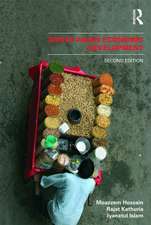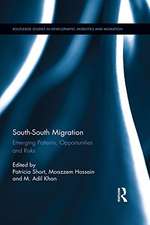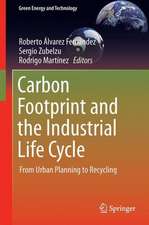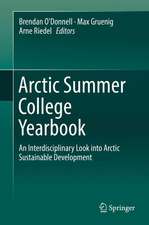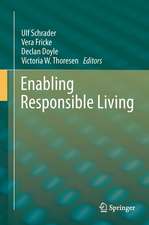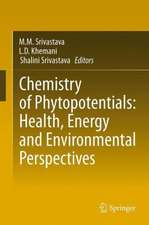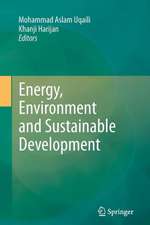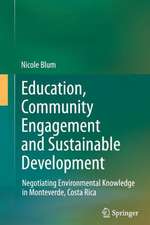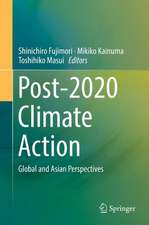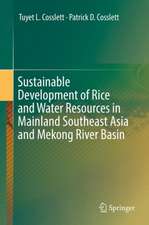Pathways to a Sustainable Economy: Bridging the Gap between Paris Climate Change Commitments and Net Zero Emissions
Editat de Moazzem Hossain, Robert Hales, Tapan Sarkeren Limba Engleză Hardback – 3 noi 2017
Each of the chapters address one or more of the following issues: restoration, mitigation, adaptation and/or promoting resilience in the face of climate change as part of achieving a sustainable economy.
The volume is multi-disciplinary in nature, drawing on various disciplines in social science, business, environment and policy, and will be of interest to UN development agencies, academic institutions, government policy makers, NGOs and business leaders.
| Toate formatele și edițiile | Preț | Express |
|---|---|---|
| Paperback (1) | 577.56 lei 38-44 zile | |
| Springer International Publishing – 9 sep 2018 | 577.56 lei 38-44 zile | |
| Hardback (1) | 700.42 lei 6-8 săpt. | |
| Springer International Publishing – 3 noi 2017 | 700.42 lei 6-8 săpt. |
Preț: 700.42 lei
Preț vechi: 824.03 lei
-15% Nou
Puncte Express: 1051
Preț estimativ în valută:
134.02€ • 140.31$ • 110.90£
134.02€ • 140.31$ • 110.90£
Carte tipărită la comandă
Livrare economică 05-19 aprilie
Preluare comenzi: 021 569.72.76
Specificații
ISBN-13: 9783319677019
ISBN-10: 3319677012
Pagini: 225
Ilustrații: XVIII, 225 p. 27 illus., 23 illus. in color.
Dimensiuni: 155 x 235 mm
Greutate: 0.52 kg
Ediția:1st ed. 2018
Editura: Springer International Publishing
Colecția Springer
Locul publicării:Cham, Switzerland
ISBN-10: 3319677012
Pagini: 225
Ilustrații: XVIII, 225 p. 27 illus., 23 illus. in color.
Dimensiuni: 155 x 235 mm
Greutate: 0.52 kg
Ediția:1st ed. 2018
Editura: Springer International Publishing
Colecția Springer
Locul publicării:Cham, Switzerland
Cuprins
Chapter1.Introduction: Pathways to a Sustainable Economy.- Part1.Critical Perspectives on Achieving a Zero Emissions Future.- Chapter2. Joining the Dots: Sustainability, Climate Change and Ecological Modernisation.- Chapter3. A Systems Critique of the 2015 Paris Agreement on Climate.- Chapter4. Structural impediments to sustainable development in Australia and its Asia–Pacific region.- Part2. Strategies to Achieve Sustainable Economy and Zero Emissions Future.- Chapter5. The Role of Planning Laws and Development Control Systems in Reducing Greenhouse Gas Emissions — Analysis from New South Wales, Australia.- Chapter6. Carbon Disclosure Strategies in the Global Logistics Industry: Similarities and Differences in Carbon Measurement and Reporting.- Chapter7. Synergy between population policy, climate adaptation and mitigation.- Part3. Major Challenges towards a Sustainable Future: Case studies from Asia.- Chapter8. From ‘Harmony’ to a ‘Dream’: China’s evolving position on climate change.-Chapter9. COP 21 and India’s Intended Nationally Determined Contribution Mitigation Strategy.- Chapter10. Seasonal drought thresholds and internal migration for adaptation: lessons from Northern Bangladesh.- Chapter11. Incentives and Disincentives for Reducing Emissions under REDD+ in Indonesia.- Chapter12. Carbon Budgeting Post-COP21 — The Need for an Equitable Strategy for Meeting CO2e Targets.
Notă biografică
Dr. Moazzem Hossain is an adjunct associate professor in the Business School of Griffith University.
Dr. Robert Hales is the Program Director of the Griffith Centre for Sustainable Enterprise at Griffith University.
Dr. Tapan Sarker is a Senior Lecturer in the Department of International Business and Asian Studies at Griffith University.
Textul de pe ultima copertă
The focus of this edited volume is to identify challenges facing organizations in achieving zero greenhouse gas emissions by 2050 and a new energy economy, and to explore solutions from various sectors of the economy to enable the transition to a zero emissions future. Research presented here is divided into three parts, with an introductory statement on growth and sustainability. Part one discusses strategies towards a sustainable economy under a zero emissions goal. Part two contains industry specific case studies focusing on construction and related activities. Part three is devoted to country specific case studies from the Asia-Pacific region.
Each of the chapters address one or more of the following issues: restoration, mitigation, adaptation and/or promoting resilience in the face of climate change as part of achieving a sustainable economy.
The volume is multi-disciplinary in nature, drawing on various disciplines in social science, business, environment and policy, and will be of interest to UN development agencies, academic institutions, government policy makers, NGOs and business leaders.
Each of the chapters address one or more of the following issues: restoration, mitigation, adaptation and/or promoting resilience in the face of climate change as part of achieving a sustainable economy.
The volume is multi-disciplinary in nature, drawing on various disciplines in social science, business, environment and policy, and will be of interest to UN development agencies, academic institutions, government policy makers, NGOs and business leaders.
Caracteristici
Identifies challenges facing organizations in achieving zero greenhouse gas emissions by 2050 Highlights the barriers faced by different sectors in creating a new energy economy to achieve the zero emissions goal Explores solutions from various sectors of the economy to enable the transition to a zero emissions future Includes supplementary material: sn.pub/extras


